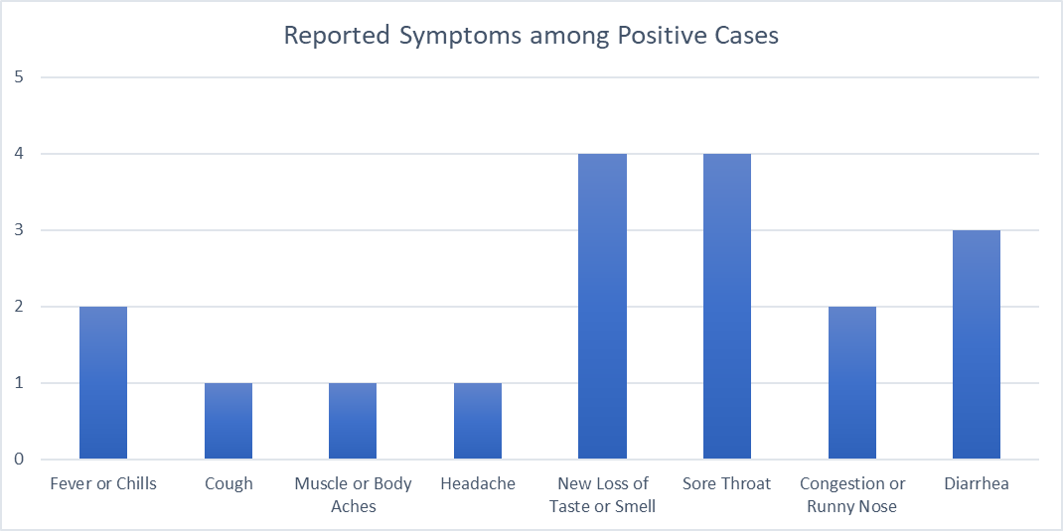Adolescent Medicine: General
Category: Abstract Submission
Adolescent Medicine I
490 - SARS-CoV-2 Detection and Outbreak Mitigation in the Juvenile Justice Setting: A Year in Review
Friday, April 22, 2022
6:15 PM - 8:45 PM US MT
Poster Number: 490
Publication Number: 490.100
Publication Number: 490.100
Asha Davidson, McGovern Medical School at the University of Texas Health Science Center at Houston, Houston, TX, United States; Trisha Mulamreddy, McGovern Medical School at the University of Texas Health Science Center at Houston, San Antonio, TX, United States; Laura J. Benjamins, Wayne State University School of Medicine, Detroit, MI, United States; Mona A. Eissa, The University of Texas medical school at Houston, Houston, TX, United States; Rebecca M. Beyda, McGovern Medical School at the University of Texas Health Science Center at Houston, Houston, TX, United States

Asha Davidson, MD
Adolescent Medicine Fellow
McGovern Medical School at the University of Texas Health Science Center at Houston
Houston, Texas, United States
Presenting Author(s)
Background: Youth involved in the juvenile justice system are a vulnerable population, and the COVID-19 pandemic has exacerbated pre-existing inequities. Limited data is available on the impact of the pandemic on youth in the juvenile justice setting. Given the nature of the congregate setting, it is important to consider the impact of community rates of COVID-19 on youth in detention.
Objective: Our study set out to examine rates of SARS-CoV-2 positivity within a juvenile justice facility and the impact of community and facility spread, as well as the effect of mitigation efforts.
Design/Methods: This retrospective chart review examined one large, urban juvenile justice center (JJC) in Southwestern United States from March 2020 through February 2021. The study included all youth in the JJC who completed SARS-CoV-2 testing. Positive tests at intake or on Day 12 suggested community acquired infection while subsequent testing indicated facility spread. We analyzed community public health measures and facility procedures to track and control the outbreaks.
Results: 882 youth were included in the study. The average age was 15.3 years and 80.4% of participants were male. The demographics of the study population mirrored the population demographics of the facility (Table 1).
The facility reported 65 positive tests for SARS-CoV-2 between March 2020 – February 2021. Most of the positive tests were on Intake (46%) and from Day 12 tests (20%). The remainder were from surveillance (17%), and new PUI (12%). Among the positive cases, 86% were asymptomatic; none required hospitalization. Symptoms among positives are noted in Figure 1. The week with the highest positivity in the center was study week 46 in mid-January (Figure 2).
Facility medical staff followed CDC recommendations along with public health guidance in forming policies regarding infection control, testing, contact tracing, and separation of positive cases (Figure 2).Conclusion(s): Positivity rates within the JJC for SARS-CoV-2 were similar to the patterns in the community. The majority of positive tests in the JJC indicated acquisition of infection from community exposure. Infection control methods such as medical separation, serial testing, contact tracing, and use of masks are effective in preventing further spread of disease within the facility when outbreaks are first noted and are useful mitigation measures. Systems such as the JJC must remain vigilant and actively pursue these measures in the setting of a pandemic to protect a vulnerable population.
A.Davidson - CVDavidson-CV-11.2021.pdf
Figure 1 Symptoms among positive youth. Some youth may report more than one symptom. Nine of the 65 positive youth reported at least one symptom.
Symptoms among positive youth. Some youth may report more than one symptom. Nine of the 65 positive youth reported at least one symptom.
Objective: Our study set out to examine rates of SARS-CoV-2 positivity within a juvenile justice facility and the impact of community and facility spread, as well as the effect of mitigation efforts.
Design/Methods: This retrospective chart review examined one large, urban juvenile justice center (JJC) in Southwestern United States from March 2020 through February 2021. The study included all youth in the JJC who completed SARS-CoV-2 testing. Positive tests at intake or on Day 12 suggested community acquired infection while subsequent testing indicated facility spread. We analyzed community public health measures and facility procedures to track and control the outbreaks.
Results: 882 youth were included in the study. The average age was 15.3 years and 80.4% of participants were male. The demographics of the study population mirrored the population demographics of the facility (Table 1).
The facility reported 65 positive tests for SARS-CoV-2 between March 2020 – February 2021. Most of the positive tests were on Intake (46%) and from Day 12 tests (20%). The remainder were from surveillance (17%), and new PUI (12%). Among the positive cases, 86% were asymptomatic; none required hospitalization. Symptoms among positives are noted in Figure 1. The week with the highest positivity in the center was study week 46 in mid-January (Figure 2).
Facility medical staff followed CDC recommendations along with public health guidance in forming policies regarding infection control, testing, contact tracing, and separation of positive cases (Figure 2).Conclusion(s): Positivity rates within the JJC for SARS-CoV-2 were similar to the patterns in the community. The majority of positive tests in the JJC indicated acquisition of infection from community exposure. Infection control methods such as medical separation, serial testing, contact tracing, and use of masks are effective in preventing further spread of disease within the facility when outbreaks are first noted and are useful mitigation measures. Systems such as the JJC must remain vigilant and actively pursue these measures in the setting of a pandemic to protect a vulnerable population.
A.Davidson - CVDavidson-CV-11.2021.pdf
Figure 1
 Symptoms among positive youth. Some youth may report more than one symptom. Nine of the 65 positive youth reported at least one symptom.
Symptoms among positive youth. Some youth may report more than one symptom. Nine of the 65 positive youth reported at least one symptom.